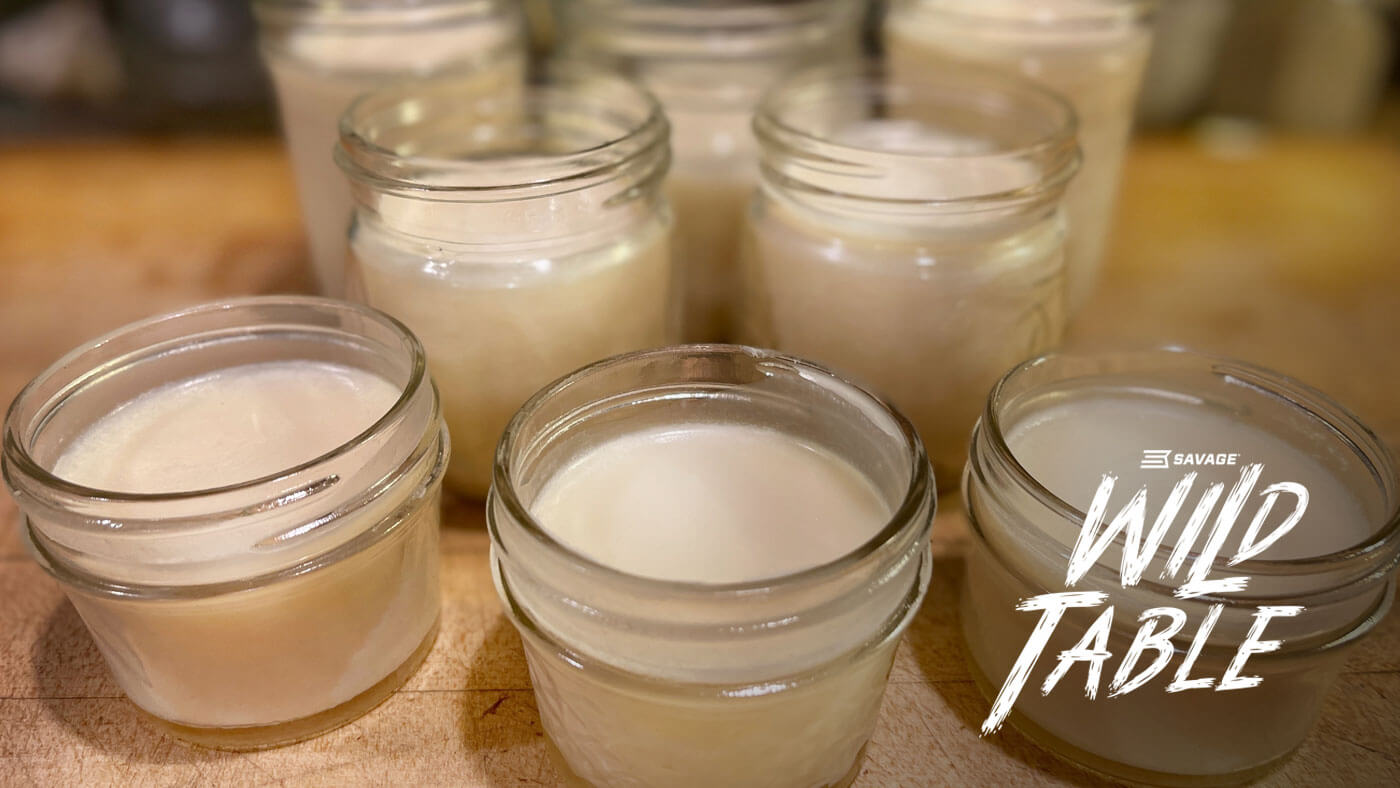- Savage Blog
- Deer Tallow: The Most Versatile Part of Deer | Wild Table
Deer Tallow: The Most Versatile Part of Deer | Wild Table

Don’t throw the fat out with the gut pile! Save it and turn it into useable products around the kitchen and home! The reputation that deer fat isn’t good for rendering and other uses, is just plain wrong and most often is due to poor handling and processing techniques. The multitude of uses for tallow make the effort worth the time. If you are like me and want to do your best to use the entire animal, then I’m here to share my experience with deer tallow because it deserves a place in your pantry and kitchen.
For decades, Americans have become more disconnected from their food, and most have relied on an industrialized food system to provide for them. Recently though, many of us have craved and regained a more intimate connection with our food through hunting and the processing of the animals we harvest. Part of that culture is doing our best to utilize as much of the animal as we can, and fat is one of the most underused parts of a deer.
What does deer fat taste like?
Like other meats, the flavor and scent profile of fat is often based on what the animal is consuming. In turn, the fat will also have a similar taste. Eating a deer from an agricultural area, where they have corn, grains and/or grasses to graze on, is going to not only add fat to the animal, but taste and smell will be different than deer that are only eating grasses & shrubs and yield less fat.
Unlike lard, which is creamy, tallow has a waxy texture and different odor. Why? Because deer fat is high in stearic acid, similar to that of beef fat. It can be off putting at first to some. Through the rendering process some of the waxy texture and smell will dissipate. I believe the reason most don’t think that tallow is palatable is due to people becoming accustomed to oils like vegetable shortening, which have no flavor because it’s deodorized and bleached, making the consumption of traditional animal fats a transition.
My List of Reasons for Rendering Tallow:
- Using as a substitute for baking & frying
- Tallow has a high smoke point making it more stable than other oils
- It has healthy essential oils & fatty acids like omega 3’s, steric acid, and linoleic acid
- Makes wonderful soaps, lotions, balms, and candles
- Great for conditioning and waterproofing leather
- Use the suet to feed to your chickens
Which fat to use
There are three areas that you will find fat on deer. First, when you peel the hide away you will see a layer of fat attached to the muscle. Second is in the body cavity where you will see a beautifully laced membrane of “caul” fat that encompasses the entrails and attaches to the spleen. Third is the suet which surrounds the kidneys and is harder and waxy. When rendering, you can use fat from all these areas. But I prefer saving the caul fat to use as a casing to wrap ground meats or other lean cuts.
How to collect deer fat
When butchering your deer, the temperature is the key to preventing fat from going rancid, particularly if you hang your deer with the hide off. One of the main reasons that deer (and other cervids) fat goes rancid quickly is because it is high in Omega 3’s. If you are processing in above freezing temperatures and warm air begins hitting the fat, the oxidation process begins, which causes rancidity. Getting it cool quickly will also aid in its shelf life.
I suggest trimming any fat you are going to save for your render pile right away and get it chilled. Use the same process if you are butchering in the field. Additionally, be cautious of cross contamination of the fat: avoid getting hair or any stomach contents in your collection, to prevent an unpleasant flavor and smell. I like to vacuum seal fat and save it for the slower winter months to process. Using Ziploc bags will work; just be certain to get as much air out as possible to avoid freezer burn.
Tools and supplies needed to render and store fat
- A grinder or a sharp knife and cutting board
- A large stock pot
- Jars or tubs for storage
- A cup of water
- Fine mesh strainer
- Cheese cloth
- Mixing bowl with a pour spout
How to Render Deer Tallow
Keeping the fat as cold as possible, begin by trimming as much of the excess meat from the fat.
Cut the fat into chunks, being extra cautious of pieces that are softer, as they often have small, dark green to brown ball inside that are glands. Be sure to take these out because they will ruin your fat if they are rendered!
Next, either cut into smaller pieces or grind it.

Place the fat into a large stockpot, add a cup of water, cover (leaving a little space for water to evaporate), and cook on the lowest possible heat setting. Adjusting the temperature as needed until the fat starts to melt.
Carefully monitor the fat and scrape the bottom of the pan to avoid burning the solids.
The fat should be kept at barely a simmer during this process. The rendering process will take a long time. It takes me about 8 hours to render full 5-quart stockpot. You’ll have bits of meat and other impurities that separate from the fat as it’s rendering.
You’ll know the fat is rendered once the impurities are floating (the little pieces generally sink to the bottom of the pot) and the fat is clear and no longer cloudy.
Once rendered, place the fine mesh colander lined with cheesecloth over a glass mixing bowl, then carefully pour your liquid fat into the colander, collecting it in the bowl.

Transfer your strained fat into glass jars and seal. Fats will absorb smells and flavors, so storing them in airtight containers is important.
How to Store Deer Fat
Deer tallow, like all rendered fats, is shelf stable, once rendered it can be kept at room temperature for a year or longer if it is kept cool and out of direct sunlight. It can also be stored in your fringe extending the shelf stability.
Are you a field to table foodie? Check out more of our wild game recipes and foraging tips on our Wild Table blog!

